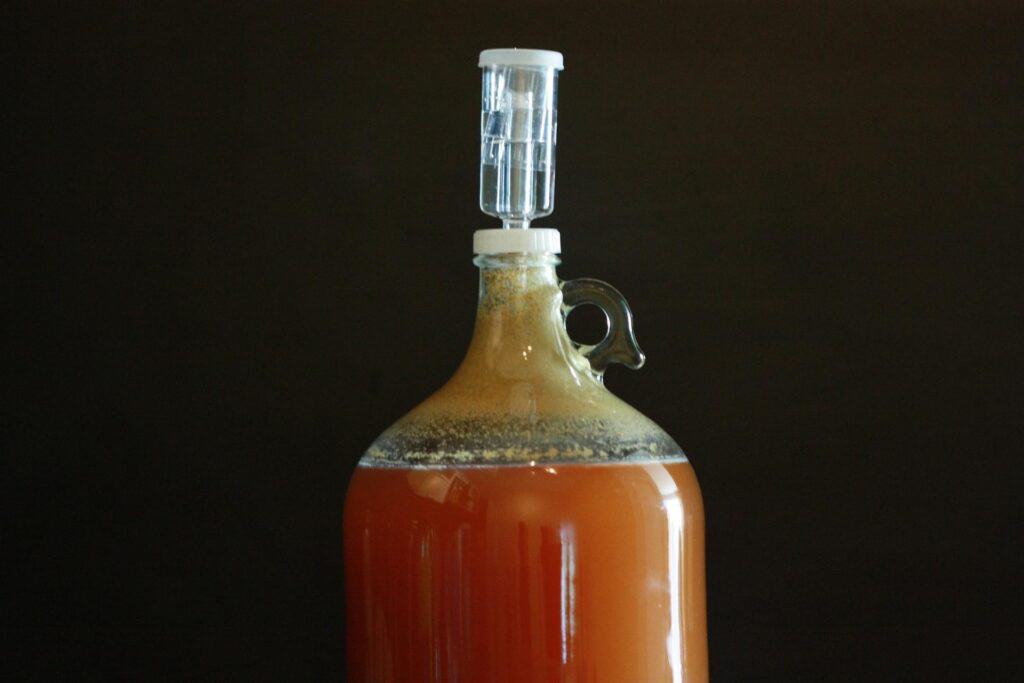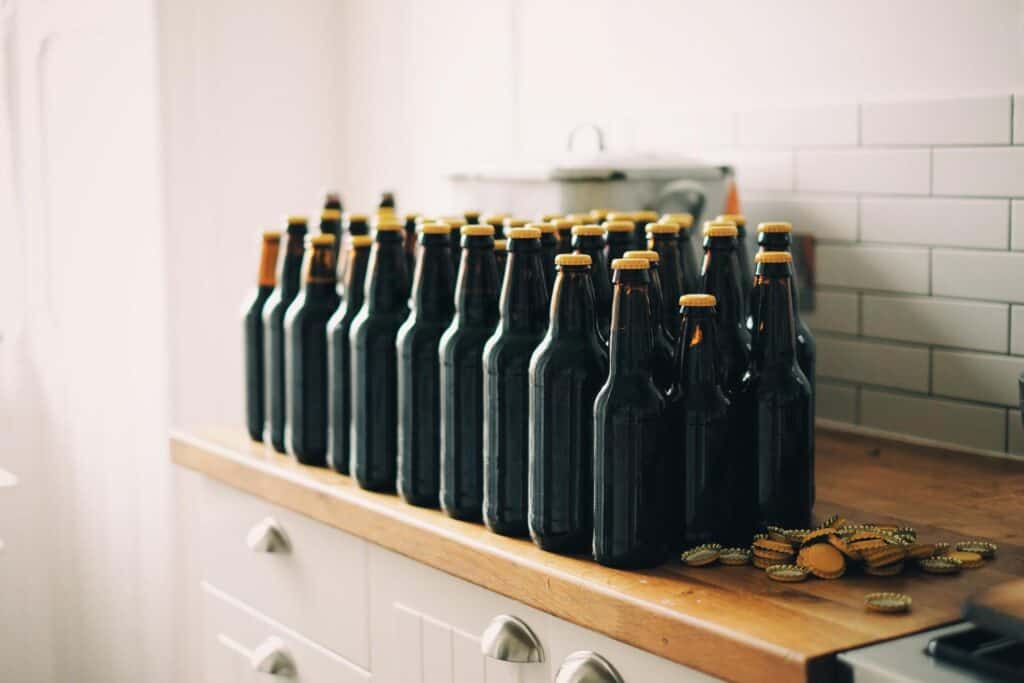If you buy something through a link in our posts, we may get a small share of the sale.
Ending up with over-carbonated homebrew is one of the most frustrating experiences for a homebrewer. That’s because it alters the flavor of your favorite drink and makes it feel too sharp on the tongue.
Using poor-quality yeast or malt, bottling too soon, and using carbonating sugar in a high amount are some of the common reasons why homebrew becomes over carbonated.
Let’s discuss how to fix over-carbonated homebrew so that you can enjoy the ideal taste of your favorite drink.
Contents
How to Fix Over Carbonated Homebrew
If you have over-carbonated your homebrew, the following methods will help you reduce the carbonation level effectively.

Fixing Over Carbonation in a Bottle
You won’t be able to determine whether or not a bottle of your homebrew is over carbonated until it explodes or gushes everywhere once opened. If one of your homebrew bottles does this and feels too sharp on the tongue, it’s highly likely that the rest of the batch is also over carbonated. Use the following steps to fix over carbonation in a bottle.
Step 1: Make it Super Cold
The first step of this process is to place your homebrew bottle in a kegerator and let it sit there overnight. Be very careful while performing this step because you want to make sure that you don’t cause agitation in the liquid to prevent the bottle from exploding.
Lowering the temperature of the homebrew bottle won’t reduce the amount of carbon dioxide. However, it’ll decrease the pressure to prevent the gushing while opening the bottle as the gas decompresses at low temperatures.
Step 2: Open the Cap
Once your homebrew bottle is super cold, remove it from the refrigerator and open its cap. Cover the bottle with a sanitized tin foil lightly and don’t make it airtight.
Step 3: Let the Homebrew Degas
After covering the bottle with a foil, let it sit on a flat surface at room temperature for one to four hours, depending upon the level of over carbonation. Your homebrew will degas naturally during that time in order to fix over carbonation. After this period, reseal your bottle with a new cap and that’s about it.
Important Note: You can taste your homebrew after every one hour to check its carbonation level. It’ll allow you to determine the right time your homebrew needs to fix over carbonation.
Step 4: Repeat the Process
Once you have determined the right time that each bottle needs to degas at room temperature, you can use the same steps to fix over carbonation in the entire batch.
Fixing Over Carbonation in the Keg
The keg usually becomes over-carbonated when you set your carbon dioxide tank to a high setting. Homebrewers usually set their carbon dioxide regulator to an extremely high setting like 30 to 45 PSI and leave it for several hours to force carbonation.
While this process can accelerate the homebrewing process, it can also over carbonate the homebrew. If your homebrew in a keg has higher levels of carbon dioxide because of the same reason, use the following steps to fix over carbonation in the keg.
Step 1: Release Excessive Pressure
You can release excessive pressure by detaching the gas line from your keg by pressing the pressure release valve. However, if your keg doesn’t come with this valve, press the poppit located on the gas-in/gain-in part using a screwdriver to release excessive pressure.
Step 2: Shake the Keg
After releasing the excessive pressure, shake the keg gently six to seven times. It’ll agitate the homebrew to release the dissolved carbon dioxide from the drink.
Step 3: Release the Pressure Again
Now, you’ll need to release the pressure again by pulling the pressure release valve. It’ll release the pressure that has built up because of shaking the keg.
Step 4: Let the Keg Rest
Taste your homebrew to check its carbonation level. If it’s still over-carbonated, repeat the steps listed above until the over carbonation has been fixed. After that, let the keg sit for one to two hours to settle without attaching the gas line.
Is Over Carbonated Homebrew Bad?

Over carbonated homebrew isn’t only hazardous and frustrating, but it can also affect your final pour negatively. That foam that spills out from an over-carbonated homebrew bottle will leave the rest of the drink flat and it’ll also be incredibly volatile.
It’s also impossible to get a good head of foam from an over-carbonated homebrew bottle, even if you manage to pour most of the overflow into your glass, there might be stray sediments that will flow right out of your bottles.
Keep in mind that the foam decomposes exponentially. It means that the high quantity of loose foam that over-pressurized homebrew produces will break down quickly. It’ll keep your homebrew from forming a stable and thick head that you get from a slow and long pour of properly carbonated drink.
An over-carbonated bottle can also explode in your hands which can lead to a severe injury. Therefore, it’s important to make sure that your homebrew is properly carbonated for the sake of satisfaction, sanity, and safety.
Frequently Asked Questions
The following are the most frequently asked questions about over-carbonated homebrew.
Why Does Homebrew Get Over Carbonated?
Using poor-quality yeast or poorly milled malt, bottling too soon, and using carbonating sugar in a high amount are some of the most common reasons that lead to over carbonated homebrew. The homebrew in the keg can also become over-carbonated when you select high settings of your carbon dioxide tank in order to accelerate the homebrewing process.
Can Over Carbonated Homebrew Get Fixed with Time?
Yes, the over-carbonated homebrew can get fixed over time as the homebrew bottles are not fully airtight and release gas slowly. That’s because the highly pressurized environment inside the bottle tries to seek equilibrium with the level of pressure in the outside air. However, it’s an extremely time-consuming process that can easily take weeks to fix over-carbonated homebrew.
Final Words
Finishing your homebrewing process just to find out that your entire batch is over carbonated is a frustrating experience. Not only does it make the homebrew taste bad but it can also lead to injuries if a homebrew bottle explodes in your hands.
I hope this guide will help you understand the right way to fix your over-carbonated homebrew. It’ll allow you to enjoy the ideal taste of your favorite drink with your family and friends.

